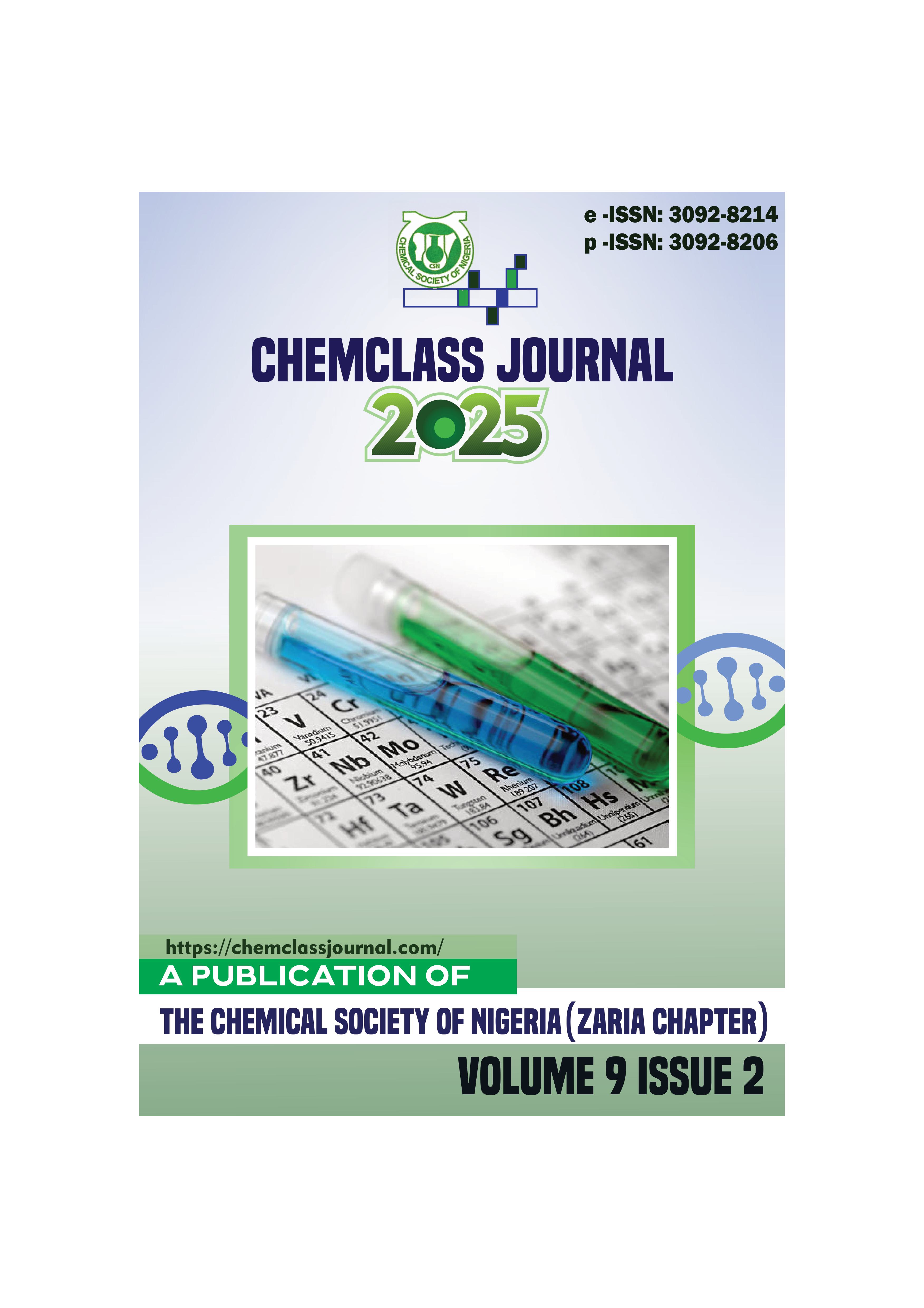Microwave-Assisted Extraction of Carotenoids from Orange and Mango Peels Using Green Coconut Oil versus Solvent-Based Methods
DOI:
https://doi.org/10.33003/chemclass-2025-0902/191Keywords:
Sustainable extraction , Green extraction , Mango, Orange, Antioxidant capacity , Carotenoids , Bioactive compoundsAbstract
This study was designed to compare and determine the effects of microwave-assisted green extraction
(MAE) and conventional extraction (CE) techniques on the carotenoid content, polyphenolic compounds,
and antioxidant activities of mango and orange peels. The MAE was carried out using coconut oil as a green
solvent, while the CE involved solvents such as Hexane:Acetone (2:1), Ethanol:Water (20:1), Ethyl
acetate:Petroleum ether (1:1), 100% Hexane, and 100% Acetone. Results showed that the total carotenoid
content (TCC) obtained from MAE (19.27 ± 0.08 µg/g for orange peels and 25.85 ± 0.08 µg/g for mango
peels) was significantly higher (p < 0.05) than those from all conventional methods, with the highest CE
values being 16.62 ± 0.09 µg/g and 17.55 ± 0.28 µg/g, respectively. Polyphenol contents ranged from 6.39
± 0.23 to 27.54 ± 0.06 mg GAE/g for orange peels and 5.44 ± 0.08 to 19.51 ± 0.06 mg GAE/g for mango
peels, with MAE yielding approximately 1.7-fold higher values compared to the best-performing CE.
Furthermore, total antioxidant capacity (TAC) of the carotenoid extracts from MAE (46.94 ± 0.15 and 37.20
± 0.15 mg AAE/g for orange and mango peels, respectively) was significantly greater (p < 0.05) than those
obtained from CE. In addition to enhancing the quality and yield of carotenoids extracted from mango and
orange peels, MAE demonstrates clear environmental advantages. These findings highlight the potential of
microwave-assisted green extraction as a sustainable method for recovering valuable bioactive compounds
from fruit peels for use in functional foods, nutraceuticals, natural colorants, and cosmetic formulations.





 ChemClass Journal
ChemClass Journal
